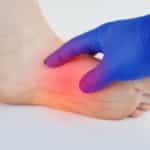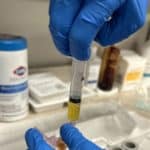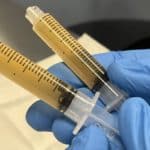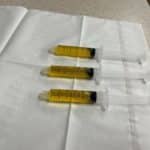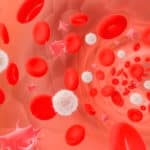What if you could “tell” your body to start repairing an older injury in your body? And what if the way to do that was from capturing your own blood?
The idea of using regenerative medicine is becoming more popular as doctors understand the immense self-healing ability of the human body. PRP Therapy stands for platelet rich plasma therapy and it is one of many regenerative medicines available today.
In this article we will discuss hip arthritis, hip osteoarthritis treatments and the idea of patients treated with platelet rich plasma therapy to relieve the chronic hip pain of hip arthritis.
People who suffer from hip arthritis experience various degrees of pain and loss of mobility, the condition often creates so much pain that the standard treatment for hip osteoarthritis is a total hip replacement. However, a total hip replacement comes with risks. For this reason, many hip arthritis sufferers look for a less intrusive alternative.
P therapy is a promising treatment option in place of total hip replacement. It has been shown to alleviate the pain of arthritic hips and going even further, it assists the body with tissue healing and to regenerate the worn and broken down joint by stimulating growth factors.
Understanding Hip Arthritis
Hip Arthritis is quite a common condition that has experienced a significant increase globally from 1990 to 2019, according to a Global Burden of Disease study. The standardized-age occurrence rate went from 17.02 per 100,000 people in 1990 to 18.70 per 100,000 people in 2019 (Fu et al, 2022).
There are more than one type of hip arthritis. Some of these are:
Osteoarthritis – This type of arthritis is of the bone and means wear and tear on the hip joint. It creates hip disability.
Post-traumatic arthritis – This occurs after an injury or trauma to a joint and develops quickly, not over a long period of time like wear and tear does. The good news with this type of arthritis is that it usually is temporary and when the injury heals, so does the arthritis.
Rheumatoid Arthritis – This type of arthritis is throughout the body not just the hip and is caused by the body’s immune response rather than the breakdown of a joint.
Psoriatic arthritis – This arthritis is linked to the skin condition psoriasis and along with the skin condition, it can cause inflammation and chronic pain in the joints of the body.
Despite the various types of hip arthritis, the symptoms of each are usually similar; hip pain and inflammation. Some types have more debilitating symptoms than others. For example, post-traumatic arthritis can be more painful, but is temporary whereas osteoarthritis is a longstanding condition that can increase in severity over time.
In order to diagnose hip arthritis, a medical professional will first ask the person about their medical history and symptoms.
Next, they will physically examine them and look for signs of hip joint pain or, inflammation and swelling. If they can see there is likely a joint issue, they will likely refer the person to have x-rays and MRIs done on the hips in order to confirm the diagnosis.
Once they have confirmed the diagnosis, the doctor will then recommend treatment to their patient. If hip osteoarthritis is severe enough to the point that it is negatively impacting the quality of the person’s life, then they may suggest hip replacement therapy.
For less severe hip osteoarthritis in the early stages or other types such as psoriatic hip arthritis or rheumatoid hip arthritis, the treatment may be pain medicine as well as injectable medicines such as cortisone or PRP therapy.
PRP Injection Therapy Explained
PRP injection therapy is classed as a regenerative medicine and stands for platelet rich plasma. This therapy stimulates the body’s natural self-healing to promote tissue healing within joints and treat muscle injuries, regrow cells and reduce inflammation for pain relief.
PRP treatments work by extracting a patient’s own blood platelets into a tube and then injecting them into the troublesome area. When this happens, the body is able to use the platelet rich mixture to form growth factors, rebuild collagen and start repairing the damaged area.
There are many benefits to using PRP injections instead of surgery and this is because it comes with less risk and complications than intrusive surgery. It takes only 30-60 minutes and is more affordable. It has a quicker recovery time with less pain post treatment than surgery which can be months.
PRP Injection Therapy vs. Other Treatment Options
A study comparing the effectiveness of PRP injections versus steroid injections was conducted in 2020 with a total of 90 randomly selected participants with plantar fasciitis. The results of the study showed that those who received the platelet rich plasma therapy showed a better improvement at their six month post treatment check up. There was also a significant reduction in the plantar fasciitis thickness reported in the PRP group than the steroid injection group in the post 6 month follow up, indicating PRP’s ability to assist the body in breaking down hardened injured tissue (Sharma, R., Chaudhary, N.K., Karki, M. et al, 2023).
A result of searching 287 records of reviews and studies completed on or before February 2018 comparing PRP injections with hyaluronic acid injections on hip arthritis, revealed a significant improvement of those in the platelet rich plasma group at 2 months post treatment compared to the hyaluronic acid group.
However, when it came to six and twelve month post treatment there was no significant difference between the two injection groups (Xiang Zhou et al, 2018). This may indicate that PRP injections may work better than hyaluronic acid if repeated at least every 2-3 months to assist in the body’s regeneration.
Without there being any studies found that compared the outcome of patients who had hip arthritis surgery versus those who had PRP injection therapy, it is hard to know for sure if one was more effective than the other.
However, there are several advantages to trying platelet rich plasma injection therapy as an alternative to surgery due to the low risk, affordability, less pain post treatment and faster treatment time than surgery.
PRP Injection Therapy Procedure
In order to be prepared for platelet rich plasma injections, a patient needs to avoid anti-coagulant medications for 1-2 weeks prior to their first treatment. Taking blood thinners close to the time of treatment may increase the risk of excessive bleeding during or after the treatment.
It is also important for a person to drink lots of water leading up to the treatment. It is best to arrange a ride home from the PRP injection therapy clinic beforehand since a person cannot drive for 24 hours after the therapy.
The PRP injection procedure is usually conducted in a treatment room at an orthopedic clinic. The medical professional will ask the person to sit or lay down comfortably while they draw their blood from a vein with a syringe. The patient’s blood is collected into a tube that contains a solution to stop the blood clotting. Then the blood is centrifuged, which means it is spun at a certain speed to concentrate the red blood cells. This concentrated part is then injected directly into the treatment area.
After the treatment, it is recommended for a patient not to take any blood thinning medications for 10 days post treatment and to avoid strenuous exercise straight after treatment. Most patients recover fully within just a few days.
Please note, if someone is experiencing post treatment pain or swelling after 5 days, it is recommended they contact their doctor about it.
Efficacy of PRP Injection Therapy for Hip Arthritis
A review conducted in 2018 of three randomized trials on the efficacy of PRP injection for hip osteoarthritis involving 115 patients between the ages of 53 to 71, showed an improvement in mobility and a reduction in symptoms that was maintained up to 12 months post treatment (Ali, M et al, 2018).
There are numerous studies on platelet rich plasma injections and their efficacy and success. The American Academy for Orthopaedic Surgeons reported on some of these clinical studies. One randomized clinical trial in particular showed significant improvement in over 84% of the 230 patients. The patients reported a 25% or greater reduction in their tendinopathy after 24 weeks.
Not only does PRP have a high success rate, its results persist over time, providing long term pain relief. This is due to its regenerative tendency on stem cells throughout the body.
Potential Risks and Side Effects of PRP Injection Therapy for Hip Pain
As a whole, PRP injection therapy is a highly successful and often long lasting treatment for hip pain.
However, like all treatments it does come with some risks, such as a low risk of complications, an injury or an allergic reaction.
The good news is that among the broad collection of research studies, adverse reactions or complications are very rare.
For one to five days after a platelet rich plasma injection it is normal to feel pain and discomfort at the injection site and some slight swelling. However, if symptoms persist after that, it is wise for a person to see their doctor.
Choosing a Qualified PRP Injection Therapy Provider
When choosing a PRP therapist, it is extremely important to make sure the person is properly qualified. This is easy to determine because the authority that can certify a platelet PRP practitioner is the American Academy of Orthopedic Surgeons.
PRP injections are not generally covered with insurance however the medical practitioner may be able to suggest how to cover some of the cost.
Conclusion
When it comes to the long term improvement of hip arthritis, PRP injection is a promising alternative to surgery because it is less intrusive, involves less risk and allows the body to be prompted to to produce growth factors and provide pain relief.
In comparison to other treatments such as steroid injections and hyaluronic acid, it provides a noticeable improvement often up to six months.
Like a lot of medical treatments, it does come with a very low risk of an allergic reaction or injury, however if a person is considering PRP therapy, the best advice is to consult their doctor first because they know the person’s medical background.
Overall, PRP treatment is an effective and safe alternative to surgery in some cases. It is becoming more and more popular as regenerative approaches to health are more realized.


